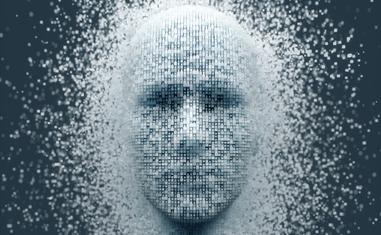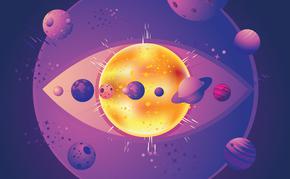The views expressed in our content reflect individual perspectives and do not represent the authoritative views of the Baha'i Faith.
With the release of ChatGPT by OpenAI, and other artificial intelligence (AI) programs pending from multiple sources, concerns about the capabilities of modern AI have grown rapidly. Should we all worry?
AI’s like ChatGPT, which represent a new frontier in technology, can converse freely in flawless grammar on an apparently endless variety of topics. While AI programs do make factual mistakes, and even sometimes invent their own, they appear to be capable of using human-like reasoning in computer-generated conversation.
RELATED: The Future of Work in a Spiritual World
For example, ChatGPT has purportedly passed several tests, from state Bar exams to the SAT test, and can generate new complex computer code on demand to solve a variety of arbitrary problems.
Concurrent to this have been the rise of other types of image generation software, such as Stable Diffusion and Midjourney, which can generate amazing images that can appear from photorealistic to hand-drawn based on a simple series of word prompts.
Serious debates have ensued: to what degree do these computers imitate the rational and creative aspects of human consciousness? Could they eventually become “conscious?” While these systems have not yet risen to a high enough degree to faithfully emulate true human reasoning or consciousness – the ambition of the so-called Artificial General Intelligence (AGI) project – they are clearly performing intellectual rational processes which one might argue is a type of “thinking.”
In my view, it would be a mistake to simply dismiss this as a sophisticated “cut-and-paste” function, as many have argued – these systems are doing something much more. Apart from their superficial imitation of the neural structure of the human mind using so-called neural networks, they appear to be constructing very sophisticated models of the world in ways which no other organism outside of humans has been able to achieve.
Modern artificial intelligence is built using layers of interconnected “neurons” which, in a very rudimentary way, imitate how biological neurons are activated. So-called deep neural networks consist of many layers of these networks of neurons. Both ChatGPT and Midjourney are deep neural networks that employ what is called an “information bottleneck,” a term coined back in 1999 by the late Naftali Tishby, professor of computer science and computational neuroscientist at the Hebrew University of Jerusalem. Further investigation into these systems reveal that they are developing true reduced semantic models of the world from which they make predictions. The term semantic here represents the amount of correlation between two things. For example, my watch has semantic information about the physics of the earth-sun system, that is the hands correlate with sunset and sunrise.
The process of generating a reduced Semantic representation of the world is reminiscent of how human scientific progress generates better and better mathematical models of the physical world. For example, the Copernican revolution moved from an earth centered model of the universe to a sun centered model of the universe. This was useful because it generated a greatly reduced semantic model of the known universe. That is there were far fewer variables to contend with, thus making predictions and calculations of the orbits of the planets much simpler. This process of generating increasingly reduced semantic models of the physical world describes the historical progress of scientific inquiry.
Several thinkers have suggested that this process of developing models which predict the world better and better might represent an important driver of evolution. The evolutionary value of these reduced semantic models lies in their ability to make predictions which can be used to create or maintain a given order or structure. It is why complex systems reward handsomely any subsystem with this ability from financial markets to eco-systems.
RELATED: Using Tech for the Higher Purposes of Humanity
While these systems do appear to mirror aspects of human consciousness which not long ago many assumed were the exclusive domain of humans will they ever be capable of harboring a human-like soul? Addressing this question forces us to ask, what are the distinguishing characteristics of the human soul? This question exposes the truth of Baha’u’llah’s statement:
Know, verily, that the soul is a sign of God, a heavenly gem whose reality the most learned of men hath failed to grasp, and whose mystery no mind, however acute, can ever hope to unravel.
Baha’i scripture has much to say about the human soul. These include:
- The purpose of the human soul
- Its key characteristics and uniqueness
- How the human soul is different from other organisms
- The possibility of true “creation”
- The extent and possibility of self-knowledge
In the next installment of this three-part series, we’ll look at the origins of our human souls, and explore what those origins might mean for the future.

















Comments
Sign in or create an account
Continue with Facebookor